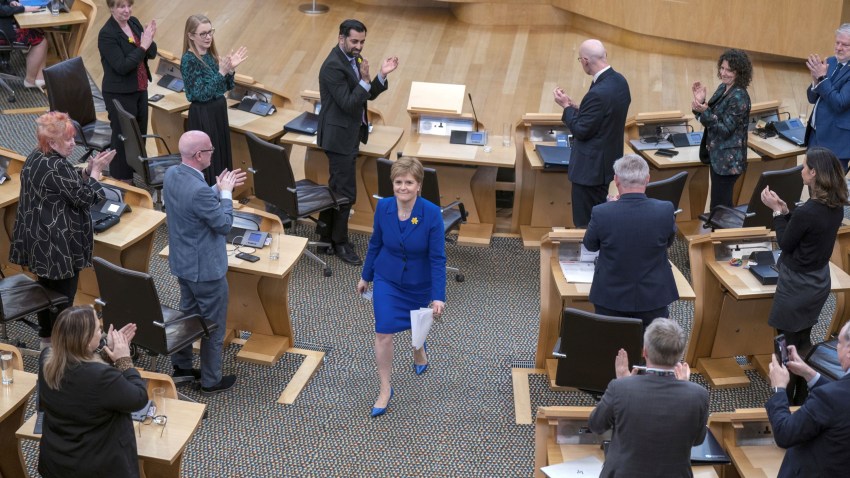It was not supposed to end like this. Until recently, Nicola Sturgeon could have reasonably expected to make her final speech at the Scottish Parliament as the departing leader of an independent Scotland. But when she bid farewell as first minister of Scotland on March 23, she was not departing after the triumph of her cause. After a year of mounting problems for the Scottish National Party, Sturgeon had instead decided that she was no longer in a strong enough position to lead the independence movement to final victory.
Many of the reasons cited for her resignation from the positions of first minister and leader of the SNP, both of which she held since 2014, affected the battle within the party to determine her successor. During the SNP leadership election, the candidates faced fraught questions over a legislative impasse with the British government over a controversial gender recognition bill that had opened up divisions within the party. In particular, the sharp divide that emerged between a more religiously conservative stance toward trans rights, represented by Kate Forbes, and the more liberal stance of Hamza Yousaf, who went on to win the leadership election, reflected the extent to which the SNP is an ideologically heterogeneous coalition brought together by the shared goal of Scottish independence.
Under Sturgeon’s firm leadership, the SNP’s factional tensions were largely held in check through hopes that Scottish independence could be achieved soon. Though defeat in the 2014 referendum over Scottish independence was a setback for the SNP, the 45 percent of the Scottish electorate that proved willing to vote “yes” provided the electoral backbone for the party’s triumphs in the years that followed. That Sturgeon was a more widely popular leader than her predecessor, Alex Salmond, enabled the party to firmly entrench itself as the dominant force in Scottish politics.

